#distributor livestock supplies
Text
Warnings- desperation, implied/referenced- starvation, genocide, forced famine, eating of pets, death, cannibalism, pollution, murder, massacre
"By the way," Maverick finally said, voice quiet and filled with something... if Ben hadn't known better, he would call it hopelessness. "We haven't gotten a barge in a month. The last one we got was full of livestock, but every single one of them was rabid. We had to euthanize and securely dispose of all of it, because we can't risk another outbreak and we don't want to take the chance you can get rabies from eating a rabid animal. Your dad didn't like that we checked them over before releasing them. All barges are now routed, by official orders, to Maleficent, and she distributes supplies as she sees fit.
"I can only manifest so much under the barrier and even if that weren't a problem, we have no way to distribute food. We would need carts, and those carts would need battalions we don't have to protect them because believe me, we tried, but Maleficent attacked what we sent out and stole everything before it could be distributed. Assuming we did have battalions, we would need an irregular drop schedule because Maleficent has the numbers to overpower us, and that irregular schedule would impair the amount of food we'd be able to hand out. We wouldn't be able to hand out anything in Villain's Keep of Barricade, because she can respond too quickly. We're using the ships to distribute, but that's not effective. Maleficent's men will attack people they notice going to the ships for food, kill them. If they see anyone carrying food, they take the food and kill the person. People are too scared to get food or supplies.
"It's only a matter of time before she starts attacking the ships. The Hope and the Secret are docked in places she can't get to yet, but it's only a matter of time before she sets her sights on the Roger, the Revenge, and even the Hurricane. The only one of those that's almost completely protected from her is the Hurricane. The Revenge is well-guarded but there's no way for them to cut off an enemy's access to the ship- the only way to access the Hurricane is a pipe, and that pipe can be blown the second Harriet give the order, but the Revenge is on the docks and the only way to cut off access would be to set sail. The Roger has pretty much zero protection- she's unable to sail, so if she gets attacked there's no way out. Also, the Hurricane is the only ship that has functioning long-range weapons. If the Hurricane is attacked while out at sea, they can fight back with more than just bows and arrows. The Revenge has no canons. As long as the Revenge is anywhere near the Isle, we run the risk of losing that one, too. And if we lose both of those, the only distributor will be Harriet and the Hurricane will be Maleficent's main target. And there would be a monumental loss of life.
"We could use the Broken Arrow, but Maleficent can still kill people going there for food and either way, we're monumentally fucked if the Arrow falls into her hands because she has a functioning model of the Tsar Bomba. Yeah, you heard me right.
"So really, we don't have an effective way of distributing food. Most of the Isle is reliant on barges, which they no longer have access to. It's only been a month but people are already getting desperate. I recovered seventeen corpses from The Woods last week alone.
"You have to realize that food on the Isle is entirely reliant on barges. Your father had the soil cursed so that it can't be farmed. The pollution kills sealife and plants, the only way we can fish is diving to the reef nearly two miles off the coast but the reef has sharks and a billion other hazards. We can't hunt unless we hunt rats and cats, because stepping into The Woods or the Wilds is a death sentence unless Tarzan or Mara happen to find you in time. We only have one source of fresh water, a well in Villain's Keep, and Maleficent controls access to it. We don't have ways to make our own textiles or other equipment, we don't have working electricity or gas to cook, and we don't have the equipment or knowledge required to build agricultural things in our basements. Don't even get me started on the hospital. Your father made us entirely reliant on his good grace and we're out of it for not letting another rabies outbreak happen.
"In two more weeks, people will get desperate. I've seen visions of it. They'll eat pets first, then, when they run out of those, they'll start eating other people. I see..." her eyes closed, "I see corpses, stripped of their flesh, left to rot in the streets. I see people being dragged out of their homes, dismembered, and cooked. I see thousands flocking to the few sources of food only to be murdered before they can even see the ships. Senseless murder, long, slow deaths, disease running rampant, innocent people being slaughtered in droves. I see mass exodus to the Isle of Exile, and I see the crazed eventually following us there. I see our last true refuge filled with thousands of people without room for thousands more suffering and dying.
"I see the end of everything we've built. I see our society crumbling under desperation. I see us being forced to leave our home because of your father's cruelty. And I see nothing I can do about it without giving your father an excuse to begin to massacre us.
"And I'm gonna be honest, what I see terrifies the fuck out of me. Because I don't know how to prevent it. I don't even know if it's possible to prevent." She finally looked him in the eyes, anxiety and desperation so strong it took Ben's breath away. "I want you to remember what I've said. And I want you to know that I've done what I've had to do. This is the only way forward I see, the only one where we have even the tiniest chance of survival. If you remember nothing else, remember that, Fenris."
#what the fuck did i just write#descendants#descendants au#isle of darkness#original character#descendants oc#maverick mim#swearing#descendants ben
14 notes
·
View notes
Text
Industrial Applications of Mild Steel Pipes
Mild Steel (MS) pipes are widely used in industrial applications due to their exceptional strength, durability, and affordability. As a reliable MS Pipe dealer in Gujarat, Tube Trading Co., understands the importance of these versatile pipes in a range of sectors. In this article, we will explore the industrial applications of MS pipes and highlight their significance as a Square pipe distributor in Vadodara.

Construction Industry:
The construction industry heavily relies on the utilization of mild steel pipes for various applications. These pipes are commonly employed in plumbing systems, water distribution networks, and sewage lines. The corrosion resistance and durability of MS pipes make them particularly suitable for underground installations. Moreover, they are extensively used for structural purposes in the construction of frameworks for buildings, bridges, and other infrastructure projects. The square-shaped MS pipes supplied by Tube Trading Co. - an excellent Square pipe distributor in Vadodara, make them highly suitable for creating sturdy supports, columns, and frames, enhancing the overall strength and stability of structures.
Oil and Gas Industry:
The oil and gas industry heavily relies on mild steel pipes for efficient resource transportation. These pipes are crucial for conveying petroleum products, natural gas, and various chemicals. The strength, reliability, and cost-effectiveness of MS pipes make them an excellent choice for pipelines in the industry. They possess the ability to withstand high-pressure applications, making them suitable for both onshore and offshore operations. The most trusted and noteworthy MS Pipe dealer in Gujarat - Tube Trading Co. caters to the demand for quality pipes in the oil and gas sector, ensuring the seamless flow of resources and contributing to the industry's overall productivity.
Automotive Manufacturing:
MS pipes are widely used in the automotive sector for manufacturing exhaust systems and chassis components. The excellent weldability of MS pipes allows for easy fabrication, enabling the production of customized exhaust systems that meet specific performance requirements. Additionally, the durability and strength of MS pipes make them suitable for creating sturdy chassis components, ensuring the safety and structural integrity of vehicles.
Agriculture and Irrigation:
Mild steel pipes are an integral part of irrigation systems in the agriculture sector. These pipes are used to transport water from sources such as wells, rivers, or reservoirs to fields for crop irrigation. MS pipes are durable and resistant to harsh environmental conditions, making them suitable for both above-ground and underground installations. They are also utilized in the construction of fencing structures, greenhouses, and enclosures for livestock. Square pipes, distributed by Tube Trading Co. - a reliable MS Pipe dealer in Gujarat, are commonly employed to create robust support frames for agricultural structures, ensuring their stability and longevity.
Manufacturing and Engineering:
Mild steel pipes are widely utilized in the manufacturing sector for diverse purposes. They play a crucial role in the fabrication of machinery, equipment, and conveyor systems. MS pipes are employed as conduits for the efficient transport of fluids, gases, and other materials within manufacturing plants. Due to their strength and ductility, these pipes are reliable for conveying compressed air, hydraulic fluids, and various chemicals. Furthermore, in the automotive industry, MS pipes find extensive usage in the production of exhaust systems, roll cages, and chassis components, thanks to their durability and affordability.
Infrastructure Development:
MS pipes play a significant role in infrastructure development projects. They are used for the construction of bridges, flyovers, and elevated highways, providing structural support and facilitating the transportation of people and goods. MS pipes are also employed in the installation of underground utility networks, including water supply, sewage, and gas pipelines.
Choosing the right-sized mild steel pipes for your project:
Choosing the right-sized mild steel pipes for your project is crucial to ensure proper functionality, structural integrity, and cost-effectiveness. Let’s explore some key factors to consider while choosing the right-sized MS pipes:
Flow Requirements: Determine the flow rate or volume of fluids or gases that will pass through the pipe. Calculate the required pipe diameter based on the desired flow velocity and pressure drop. This will help you choose a pipe size that can handle the anticipated flow without causing excessive pressure loss.
Load-Bearing Capacity: Assess the load-bearing requirements of your project. Consider the weight or load that the pipe will need to support, whether it's structural loads, machinery, or equipment. Larger-diameter pipes with thicker walls generally have a higher load-bearing capacity, providing greater strength and stability.
Material Compatibility: Ensure that the chosen mild steel pipe is compatible with the fluids or gases that will be conveyed. Consider factors such as corrosion resistance, chemical compatibility, and temperature limitations. Mild steel pipes are generally suitable for a wide range of applications, but if you anticipate exposure to corrosive environments, you may need to consider additional protective coatings or alternative materials.
Installation Considerations: Evaluate the available space and installation requirements. Consider factors such as the pipe's length, flexibility, and ease of joining. Determine whether you need straight lengths or require bends, fittings, or connectors to navigate through the project site. Ensure that the chosen pipe size can be accommodated within the available space without hindering the overall functionality of the system.
Standards and Regulations: Comply with industry standards and regulations governing pipe sizing for specific applications. Different industries and regions may have specific guidelines regarding pipe size selection. Familiarize yourself with relevant codes and standards to ensure compliance and to guarantee the safety and efficiency of your project.
Cost Considerations: Evaluate the cost implications associated with different pipe sizes. Larger-diameter pipes with thicker walls tend to be more expensive than smaller ones. Consider the balance between cost and performance to ensure that you select a pipe size that meets your project requirements while optimizing your budget.
Consultation and Expert Advice: If you are uncertain about the appropriate pipe size for your project, it is advisable to consult with experienced engineers, contractors, or MS pipe dealers. They can provide valuable insights and help you make an informed decision based on the specific needs and constraints of your project.
Final Thoughts:
Mild steel (MS) pipes have become indispensable in numerous industrial applications due to their versatility, reliability, and cost-effectiveness. In Gujarat, a state experiencing rapid industrial growth, Square pipe distributors in Vadodara serve as crucial suppliers, fulfilling the demand for quality pipes, including square pipes. The construction industry benefits from mild steel pipes for plumbing and structural applications, while the manufacturing sector relies on them for machinery fabrication. In agriculture, these pipes find extensive usage in irrigation systems and the construction of agricultural structures. Furthermore, the oil and gas industry heavily depends on MS pipes for efficient resource transportation. The widespread utilization of mild steel pipes underscores their importance in driving industrial development and infrastructure growth.
#distributor#Jindal pipes#steel industry#steel companies#industrial#seamless pipes#piping material#plumbing industry#construction structure#manufacturer#construction sites
7 notes
·
View notes
Text
The easiest thing you can do today (and everyday) to help the environment is reduce or (better) stop eating meat/animal products.
Hear me out...
First, on a basic understanding of science, you could gather that breeding millions or billions of animals into existence for food takes up lots of land. We can't reduce the amount of land we use for ourselves (housing, stores, hospitals, etc.) so, logically, this land will come from cutting down more trees to make room.
Each of these animals has to eat, so lots of farmland across the world is used for livestock feed. Same idea, we have farmland for our food, so this additional farmland for livestock must take up additional space, cutting down more trees and destroying natural habitats.
Then, of course, we have greenhouse gases: carbon dioxide and methane. Livestock animals emit carbon dioxide when they breathe and methane when they fart and poop, just like humans. Unnatural amounts of these animals being raised for food causes unnatural emissions. Methane is actually significantly worse for the environment that carbon dioxide...
Those are just 3 of many reasons animal agriculture is bad for the environment.
It's easy enough to avoid animal products at least somewhat. If everyone in your neighborhood ate just 1 meal without meat/animal products, it will reduce the demand at your local store. If every neighborhood did this, the demand across all the stores would be lowered. If they don't need to restock as often, they will buy less from their distributor, and so on, eventually leading to the demand on factory farms and slaughterhouses. How do you think they know how many animals they need? DEMAND. They will not supply what is not in demand. If they aren't making money off of it, they won't produce their products (or, rather, they will produce less).
Use this as an excuse to try something new! You can find a vegan recipe, or try a meat alternative. You might find you like the new meal, and could incorporate it into your meal plan occasionally. (Personally, I think the easiest swap out if butter! The fakes taste exactly the same, can be used exactly the same, and are pretty common, depending on where you live of course.)
Baby steps might seem insignificant, but if everyone jumping at a Taylor Swift concert can cause an earthquake, we know that if we all do something little, we can make a big change.
#climate change#climate crisis#positive change#make a difference#save the planet#go vegan#bit of a rant
4 notes
·
View notes
Text



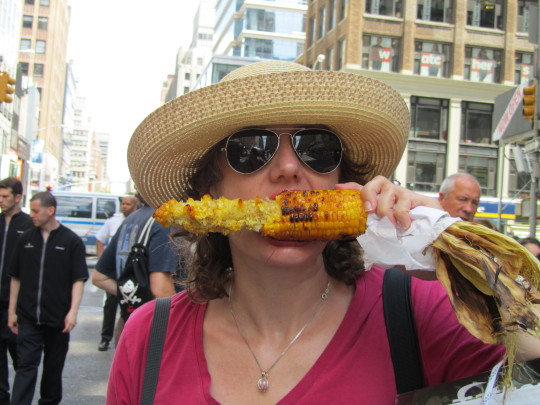



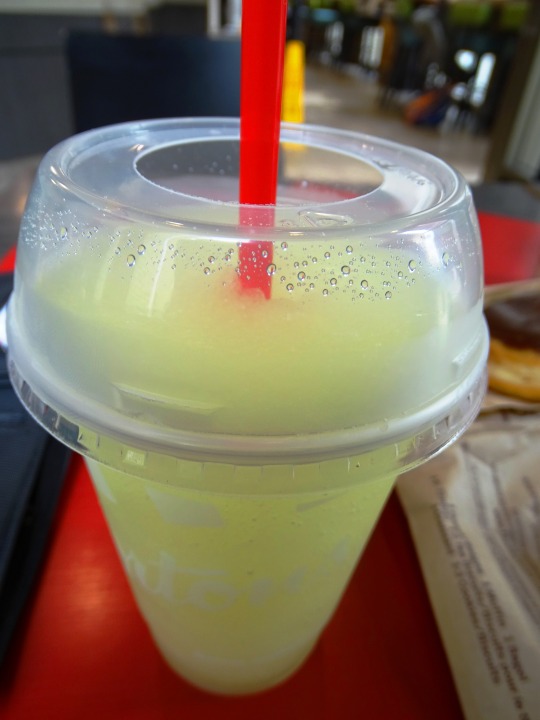
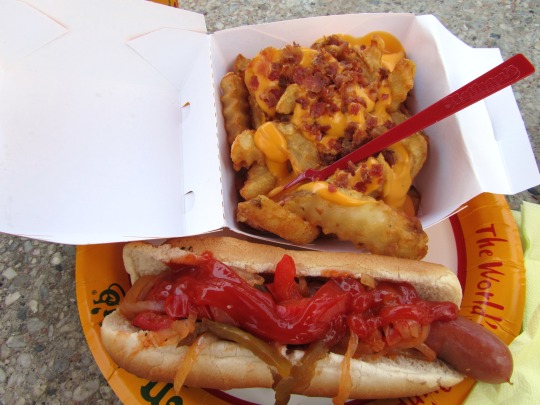


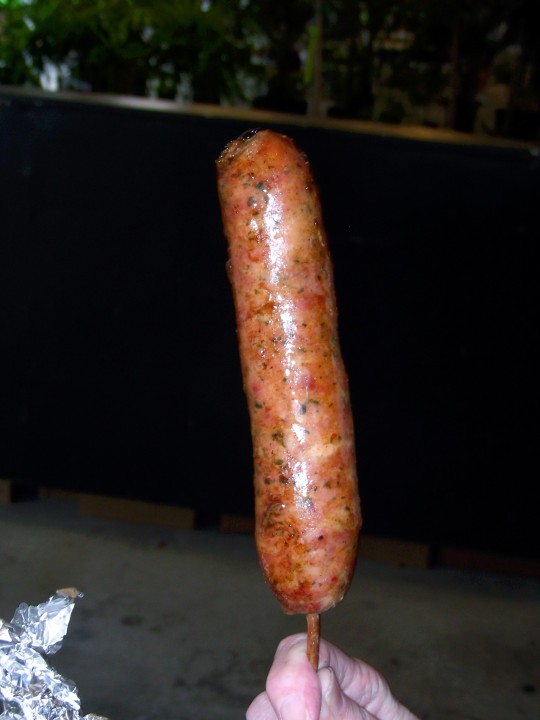



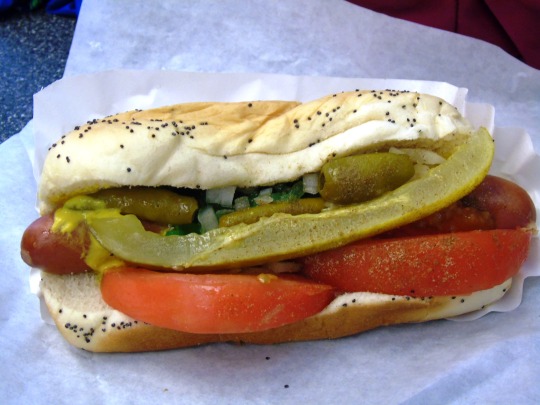


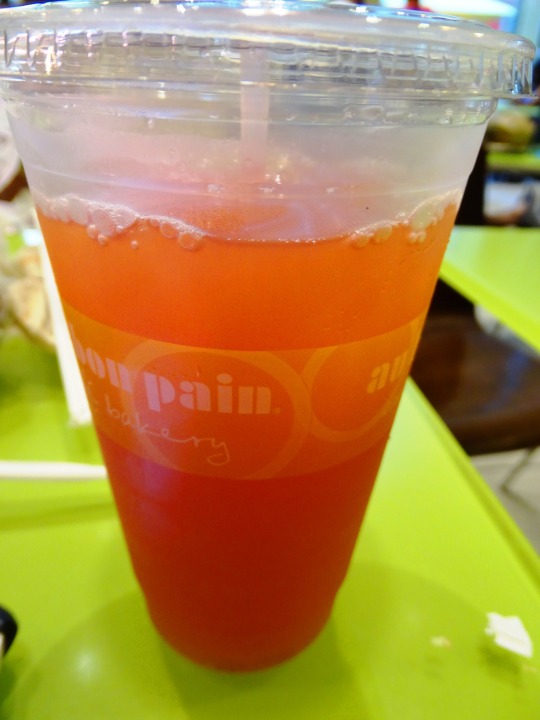







National State Fair Food Day
This year, Food Service Direct will be celebrating the first-ever National State Fair Food Day on July 11. There is much to love about state fairs — the rides, competitions, stalls, and the best part, food! While nothing beats attending a state fair, sometimes we just want to enjoy all the great food without waiting in lines with crowds of people. Instead, you can order state fair food from Food Service Direct, prepare simple recipes, and enjoy fried and delicious food straight out of the oven.
Check out the State Fair Food section at Food Service Direct and bring the fairgrounds to your backyard this summer with easy-to-follow recipes of classic state fair foods. Whatever your food needs are, wherever you are, Food Service Direct has you covered — build your unique menu today.
History of National State Fair Food Day
State fairs are a summer staple. Taking place once a year, people flock to the fairgrounds to enjoy the stalls, livestock, rides, and gifts. But let’s be honest, it’s all about the fried and delicious food, on sticks, and otherwise. The food is memorable and we look forward to enjoying it again all year long. Some of the best state foods include corn dogs, cotton candy, funnel cakes, deep-fried cookies, cheese on a stick, and chicken wings.
The first U.S. state fair was held in Syracuse, New York in 1841, and has been running successfully every year since. The second state fair was in Detroit, Michigan, which ran annually from 1849 to 2009.
Originally, state fairs were a display and celebration of the country’s agriculture; the produce, crops, and the growers who worked dedicatedly to cultivate a successful harvest. It highlighted the agricultural pride of each state, its local vendors, and regional foodways. As the structure of the country gradually shifted from agrarian to industrial, state fairs evolved to include music, amusement rides, games, and more industrial products.
But why wait for the state fair every year when you can enjoy the mouthwatering state fair food at home? Food Service Direct has you covered with everything you’ll need — from supplies to ingredients, for recreating foods-on-a-stick, cultural dishes, over-the-top desserts, and more. It’s the choice marketplace for local distributors and large manufacturers, offering a vast variety of food and related products for creating tasty meals.
National State Fair Food Day timeline
15,000 B.C.
The Beginning of the Hospitality Industry
The ancient Lascaux caves in France are used to provide accommodation for other tribes.
19th Century
The Beginning of State Fairs
State fairs are organized to display and promote state agriculture, livestock, and farm products.
20th Century
A Shift Occurs
As societies shift from agrarian to industrial, modern state fairs expand with the addition of amusement rides, exhibitions of industrial products, entertainment, and more.
July 11, 2022
The First Celebration
Initiated by Food Service Direct, the first-ever National State Fair Food Day is celebrated.
2022 State Fair Food Index Key Stats
Methodology
Food Service Direct, the first food-focused online marketplace, executed a survey in July 2022 with 2,051 adults from all 50 U.S States. To discover how U.S. consumers love state fair food the most, what are their favorite state fair food items, and how it impacts their enjoyment and quality of life.
*Fairgoer is somebody who has gone to a state fair at least twice.
State Fair Food Favorites
#1 Fries
75% of the fairgoers in Maine always get fries at the State Fair, followed by 70% of the fairgoers in Pennsylvania.
#2 Corn Dogs
50% of the fairgoers in Arkansas and Texas always get Corn Dogs at the State Fair, followed by 45% of the fairgoers in Idaho.
#3 Roast Corn
43% of the fairgoers in Florida always get Roast Corn at the State Fair, followed by 40% of the fairgoers in New Mexico and Wisconsin.
Desserts
#1 Funnel Cake
83% of the fairgoers in Mississippi and Arkansas always get Funnel Cake at the State Fair, followed by 80% of fairgoers in Oklahoma.
#2 Cotton Candy
43% of the fairgoers in Vermont always get Cotton Candy at the State Fair, followed by 60% of the fairgoers in Mississippi.
#3 Snowcone
45% of the fairgoers in Mississippi always get Snow cones at the State Fair, followed by 40% of the fairgoers in Florida, Missouri, and South Carolina.
National State Fair Food Day FAQs
What is the most popular state fair food?
Some of the most popular state fair foods are deep-fried Oreos, fried chicken in a waffle cone, deep-fried Snickers bars, pizza cones, and cotton candy.
What is a state fair?
A state fair is an annual display of the best of a state’s local produce and products, as well as a recreational gathering for people in the U.S.
What is the most popular state fair?
The State Fair of Texas attracts a staggering 2.25 million visitors every year, making it the largest state fair in the country.
How To Celebrate National State Fair Food Day
Order your favorite state fair foodsHead over to Food Service Direct’s website. Browse and order from their large variety of state fair foods.
Try new recipesRecreate state fair foods by following different recipes. You won’t miss out on anything!
Host a state fair partyInvite your friends and family to a backyard state fair gathering. Include your favorite state fair food on the menu, and include games and other activities.
5 State Fair Foods You Can Easily Make At Home
Corn dogsCorn dogs on a stick can easily be made at home, and our pro-tip is to dunk the dogs in a tall jar full of batter for an even coating.
No-fry fried ice creamEnjoy the great taste with a crispy cinnamon coating, minus the oily mess.
Deep-fried cookiesA true indulgence that is a hit with kids especially.
Turkey legsThe best marinade for turkey legs or any other state fair meat dish is available at Food Service Direct.
State fair lemonadeSip on this thirst-quenching beverage, close your eyes, and imagine you’re at the state fair.
Why We Love National State Fair Food Day
For the love of foodWe at National Today love food holidays best. And if it is a day that celebrates countless well-loved dishes? We just can’t contain our excitement.
Bringing state fair food to your kitchenWhy not enjoy great state fair food in the comfort of your home without having to stand in sweltering temperatures and long queues. We are all for it.
Services making life easierFood Service Direct is dedicated to making the distribution of food easier for home cooks, chefs, food vendors, manufacturers, and event planners. With everything you could possibly need for creating culinary delights under one roof, what’s not to love?
Source
#frozen lemonade#strawberry lemonade#coconut ice cream sandwich#ice cream donut sandwich#fries#Chicago Hot Dog#New Yorker Hot Dog#corn dog#cotton candy#churros#bacon wrapped mushrooms#tacos#Chilbi#Lozärner Määs#LUGA#Vierwaldstättersee#Lake Lucerne#Schweiz#Switzerland#National State Fair Food Day#11 July#NationalStateFairFoodDay#Gaja Okonomiyaki#Nihonmachi Special#sugar cane juice#Coney Island Lunapark#New York City
4 notes
·
View notes
Text
Feed Flavors and Sweeteners Market Global Trends, and Opportunities Forecast by 2031
Feed Flavors and Sweeteners Market Scope & Overview
Many industry experts and research analysts from various fields have reviewed and assessed the information in this research study. The fundamental purpose of this research is to help the reader gain a better knowledge of the market in terms of definition, segmentation, market potential, noteworthy trends, and industry challenges in major areas and countries. Aside from that, the Feed Flavors and Sweeteners Marketresearch report contains a complete study of forecasted statistics, important breakthroughs, and income.
The Feed Flavors and Sweeteners market research study discusses the importance of categories as well as regional markets. An exact overview of all segments and regions has been generated based on market size and growth rate (CAGR). It also contains instructions for conducting a comprehensive market chain analysis for the global market, which includes data on raw material suppliers, distributors, customers, and manufacturers of manufacturing equipment.
Get a Sample Report https://www.snsinsider.com/sample-request/1298
Market Key Players:
DuPont , Alltech , Solvay , Biomin Holding, Kemin, Pancosma , Nutriad International Dendermonde , Grupo Ferrer Internacional, PhytobioticsFutterzusatzstoffe , Prinova.
Market Segmentation
Worldwide research provides statistics on global marketing, competitive climate surveys, growth rates, and vital development status data. Market segmentation by product type, application, end-user, and geography is discussed in the Feed Flavors and Sweeteners research report. The research looks into the industry's growth goals, cost-cutting measures, and production procedures. A full evaluation of the core industry, including categorization and definition, as well as the structure of the supply and demand chain, is also included in the study report.
By Type:
Feed flavors
Feed sweeteners
By Livestock:
Ruminants
Swine
Poultry
Aquatic animals
Others
By Source:
Natural
Synthetic
Regional Analysis
The report finishes with suggestions for future hotspots in Asia-Pacific. Profiles of prominent industry players from various regions are included in the Feed Flavors and Sweeteners market research study. The report, on the other hand, took into account all market leaders, followers, and new entrants, as well as investors, while studying and assessing the market's size. Each region's approach to increasing R&D activity is unique, with a focus on the regional impact on treatment costs and advanced technology availability.
Competitive Outlook
The research comprises a straightforward examination of complex data, as well as information on the industry's historical and present situation, as well as projected market size and trends. The analysis looks at all aspects of the industry, with an emphasis on major players such market leaders, followers, and newcomers. Because it clearly illustrates competitive analysis of key competitors in the Feed Flavors and Sweeteners market by product, price, financial status, product portfolio, growth strategies, and geographical presence, the research is an investor's guide.
The goal of this research is to give industry stakeholders a thorough picture of the Feed Flavors and Sweeteners market. The research also aids in understanding market dynamics and structure by assessing market segmentation and estimating market size.
Buy the Research Report Now https://www.snsinsider.com/checkout/1298
About Us:
SNS Insider is one of the leading Market Size research and consulting agencies that dominates the Market Size research industry globally. Our company's aim is to give clients the knowledge they require in order to function in changing circumstances. In order to give you current, accurate Market Size data, consumer insights, and opinions so that you can make decisions with confidence, we employ a variety of techniques, including surveys, video talks, and focus groups around the world.
0 notes
Text
Agricultural Building In Castle Rock, Colorado
In addition, steel buildings are non-flammable – that means they don’t catch hearth. Are you debating whether or not or not you desire a traditional wood building or one made from steel? Though comparable buildings of the previous have been, well, not that pretty; the steel buildings of at present are as and much more architecturally fashionable than most wood constructed buildings.
agricultural steel building colorado
We work onerous to supply premium farm buildings at competitive costs, however more importantly, at a excessive standard to ensure you get value for cash. Considering buying a pre-engineered metal building kit to be used in Colorado or another a half of the country? Explore your choices for prefab steel buildings in Colorado or click on right here for a value quote. The benefits of steel buildings in Colorado for residential and business buildings permit you extra vitality efficiency to help reduce your costs.
Getting a permit for a metallic building in Colorado can feel overwhelming at instances. Simpson’s building kits have never been denied a permit in the state of Colorado. While we do not obtain your permit for you, we're ready to help guide you with our expertise. Simpson Steel Building Company has been providing metal buildings in Colorado for over forty years.
Precision manufactured and sealed tight, our pole metal buildings don't allow insects or rodents in. Ironbuilt pre-engineered metallic storage buildings don't comprise wood members that may warp, sag or rot. With our buildings you don’t have to fret about wood screws backing out and inflicting leaks like in a pole barn.
We'll work with you every step of the way in which to ensure that your new steel building meets your whole needs and exceeds your expectations. We delight ourselves on our wonderful customer service and attempt to make sure that our purchasers are fully happy with their new steel building. Our dedication to high quality, affordability, and buyer satisfaction is what sets us aside from other metallic building corporations.
Dirt, gravel, or Asphalt flooring are all relevant and commonplace for structures like livestock shelters, hay storage buildings, and more. A correct basis for anchoring the building’s columns is, nevertheless, required. Our staff of consultants is here that will help you perceive how a lot concrete is required in your individual project and can even help in getting an estimated cost on your particular concrete utility with local distributors.
Installed in the structures’ roofs and walls is R-10 building insulation, which reduces vitality bills considerably whereas helping maintain comfortable, consistent temperatures year-round. Serve as further options and have been included in consideration of the variable local weather of Sedalia and the encompassing region. We know that each metropolis or county may have different steel building specs, necessities and proposals, including design hundreds.
#agricultural buildings colorado#agricultural steel building colorado#steel frame agricultural building colorado#agricultural steel building construction colorado
0 notes
Text
Navigating Climate Change: The Middle East Red Meat Supply Chain
Introduction:
In recent years, climate change has emerged as a defining challenge of our time, impacting every corner of the globe, including the Middle East. As temperatures rise and extreme weather events become more frequent, various sectors, including agriculture, are grappling with the consequences. Among the industries feeling the heat is the Middle East red meat market, which is facing complex challenges along its supply chain due to climate change.
Understanding the Middle East Red Meat Market:
The Middle East has a rich tradition of consuming red meat, with beef, lamb, and goat being staples in many regional cuisines. However, as the population grows and urbanization accelerates, the demand for red meat has surged, putting pressure on the entire supply chain, from livestock production to distribution and consumption.
Climate Change Impacts on Livestock Production:
Climate change poses significant challenges to livestock production in the Middle East. Rising temperatures, prolonged droughts, and unpredictable rainfall patterns affect the availability and quality of grazing lands, making it harder for farmers to sustain their herds. Heat stress also takes a toll on animal health and productivity, reducing meat yields and increasing mortality rates.
Water Scarcity and Feed Shortages:
Water scarcity exacerbates the challenges faced by the Middle East red meat market. With limited freshwater resources, farmers struggle to provide adequate hydration for their livestock, leading to reduced feed intake and slower growth rates. Moreover, the cultivation of feed crops, such as alfalfa and grains, requires substantial amounts of water, further straining local water supplies and contributing to environmental degradation.
Supply Chain Disruptions:
Climate-related disruptions ripple through the entire red meat supply chain, affecting processors, distributors, and retailers. Extreme weather events, such as floods or sandstorms, can disrupt transportation routes, damage infrastructure, and cause delays in delivering meat products to market. These disruptions not only increase costs but also undermine the reliability of the supply chain, making it vulnerable to further shocks.
Adapting to Climate Change:
Despite the challenges posed by climate change, stakeholders in the Middle East red meat market are taking steps to adapt and build resilience. This includes investing in more sustainable farming practices, such as water-efficient irrigation systems, drought-resistant crops, and improved animal husbandry techniques. Additionally, efforts to diversify feed sources and promote alternative protein sources, like plant-based meats, can help reduce the industry's environmental footprint.
Harnessing Technology and Innovation:
Technology and innovation play a crucial role in mitigating the impacts of climate change on the red meat supply chain. Advances in precision agriculture, data analytics, and remote sensing enable farmers to monitor environmental conditions, optimize resource use, and enhance productivity. Furthermore, research into climate-resilient livestock breeds and genetic engineering holds promise for developing animals that are better suited to withstand heat stress and thrive in challenging conditions.
Collaborative Solutions:
Addressing the challenges of climate change requires collaboration across sectors and stakeholders. Governments, industry associations, research institutions, and civil society must work together to develop and implement sustainable strategies for the Middle East red meat market. This includes policies that incentivize climate-smart agriculture, support small-scale farmers, and promote consumer awareness about the environmental impact of meat consumption.
Conclusion:
Climate change poses profound challenges to the Middle East red meat market, threatening the sustainability of livestock production and the resilience of the entire supply chain. However, by embracing innovation, adopting sustainable practices, and fostering collaboration, stakeholders can navigate these challenges and build a more resilient and environmentally friendly red meat industry for the future. In the face of climate change, adaptation and innovation are not optional – they are essential for ensuring food security, preserving natural resources, and safeguarding the livelihoods of millions across the Middle East.
0 notes
Text
Veterinary Vaccines Manufacturers Market Future Trends to Look Out | BIS Research

The primary objective of veterinary vaccine manufacturers is to produce safe, effective, and reliable vaccines that stimulate an immune response in animals, thereby conferring protection against specific pathogens.
These vaccines may be administered to animals through various routes, including injection, oral administration, or intranasal application, depending on the vaccine type and target species.
In 2022, the global veterinary vaccine market held a value of $9.44 billion. The market is expected to grow at a CAGR of 7.30% during the forecast period 2023-2033 and attain a value of $19.86 billion by 2033.
Grab a look at our sample page click here
Veterinary Vaccines Manufacturers Overview
Veterinary vaccine manufacturers are pivotal players in the global effort to safeguard animal health, ensure food security, and prevent the spread of zoonotic diseases. Manufacturing facilities of veterinary vaccine manufacturers are equipped with advanced biotechnological infrastructure to produce vaccines at scale. These facilities adhere to strict quality control measures to ensure the safety, purity, and potency of vaccines, following Good Manufacturing Practices (GMP) and other regulatory standards.
Market Segmentation
Segmentation 1: by Type
Segmentation 2: by Disease
Segmentation 3: by Technology
Segmentation 4: by Route of Administration
Segmentation 5: by Distribution Channel
Veterinary vaccine manufacturers play a crucial role in the distribution and supply chain management of vaccines. They work with veterinarians, livestock producers, government agencies, and distributors to ensure widespread access to vaccines across diverse geographic regions.
Veterinary Vaccine manufacturers remain committed to advancing animal health and welfare through innovation, collaboration, and the production of safe and effective vaccines.
Key Players in the Market
Boehringer Ingelheim International GmbH
Ceva Santé Animale
Elanco Animal Health Incorporated
Merck & Co., Inc. (Merck Animal Health)
Zoetis, Inc.
Phibro Animal Health Corporation
Virbac
And many others
Types of Veterinary Vaccines Manufacturer Market
Companion Animal Vaccines
Livestock Vaccines
Aquaculture Health Products
Biologics and Pharmaceuticals
Diagnostic Test Kits
Nutritional Supplements and Medications
Contract Manufacturing Services
Veterinary Equipment and Devices
Pest Control and Parasiticides
Visit our Life Sciences and Biopharma page click here !
Importance of Veterinary Vaccines Manufacturer Market
Research and Development
Manufacturing Processes
Regulatory Compliance
Distribution and Supply Chain Management
Major Trends and Drivers included are as follows
Technological Advancements
Increased Demand for Preventive Healthcare
Emerging Infectious Diseases
Regulatory Changes and Harmonization
Adoption of Companion Animal Vaccines
Sustainability and Environmental Concerns
Digitalization and Data Analytics
Key Question Answers
Q What are the major market drivers, restraints, and opportunities within the global veterinary vaccine market?
Q What are the major trends adopted by the global veterinary vaccine market?
Q What are the key strategies adopted by key players in the global veterinary vaccine market?
Q How is each type segment of the global veterinary vaccine market expected to grow during the forecast period 2023-2033?
Q How is each disease segment of the global veterinary vaccine market expected to grow during the forecast period 2023-2033?
Conclusion
A veterinary vaccines manufacturer specializes in the production of vaccines designed to prevent infectious diseases in animals. These manufacturers conduct research, develop new vaccine formulations, and operate advanced manufacturing facilities to produce vaccines at scale while ensuring safety and efficacy. They are essential contributors to the global effort to improve animal welfare and prevent the spread of infectious diseases.
0 notes
Text
The rising government initiatives and measures are promoting the benefits of carbohydrase in food, beverages and other related products. Moreover, the successful livestock production due to the carbohydrases and their rising usage is also a factor propelling the growth of the market. Additionally, the high energy usage is directly proportional to the financial returns for the global producers and manufacturers.
Data Bridge Market Research analyses that the feed carbohydrase market was valued at USD 3.2 billion in 2021 and is expected to reach USD 5.50 billion by 2029, registering a CAGR of 7.00% during the forecast period of 2022 to 2029. In addition to the insights on market scenarios such as market value, growth rate, segmentation, geographical coverage, and major players, the market reports curated by the Data Bridge Market Research also include in-depth expert analysis, geographically represented company-wise production and capacity, network layouts of distributors and partners, detailed and updated price trend analysis and deficit analysis of supply chain and demand.
0 notes
Text
Silage inoculants are used to control fermentation process of the silage and to improve their quality. The Silage inoculants products are gradually gaining the attention of livestock farmers due to its cost-effective solution against feed additives. Silage inoculants are used worldwide and extensively accepted with best combinations of bacteria. The manufactures of silage inoculants are investing millions of dollars to identify the most suitable combinations of bacteria and enzymes.the forecast period of 2023 to 2030.
Data Bridge Market Research analyses that the silage inoculants market was valued at USD 122.36 million in 2022 and is expected to reach USD 195.02 million by 2030, registering a CAGR of 6.00% during the forecast period of 2023 to 2030. In addition to the insights on market scenarios such as market value, growth rate, segmentation, geographical coverage, and major players, the market reports curated by the Data Bridge Market Research also include in-depth expert analysis, geographically represented company-wise production and capacity, network layouts of distributors and partners, detailed and updated price trend analysis and deficit analysis of supply chain and demand.
0 notes
Text
The Basics Of Smart Farming: How Is IoT Used In Agriculture?

In an era where technology permeates every aspect of our lives, agriculture is no exception. The emergence of smart farming, powered by the Internet of Things (IoT), has revolutionized traditional agricultural practices, offering innovative solutions to age-old challenges. This article explores the fundamentals of smart farming and delves into how IoT is transforming agriculture, from field monitoring to crop management and beyond.
Understanding Smart Farming and IoT
Smart farming, also known as precision agriculture, is an approach that utilizes technology to optimize farming operations and improve efficiency, productivity, and sustainability. At the core of smart farming is the integration of IoT devices, which enable the collection, analysis, and utilization of real-time data from various sources, such as sensors, drones, and satellite imagery.
IoT devices in agriculture are interconnected through wireless networks, allowing farmers to remotely monitor and control farm operations from anywhere with an internet connection. This seamless connectivity and data exchange enables farmers to make data-driven decisions, optimize resource allocation, and respond promptly to changing environmental conditions.
Applications of IoT in Smart Farming
IoT technology finds a wide range of applications across the agricultural smart farming value chain, revolutionizing traditional farming practices and enhancing productivity and sustainability. Some key applications of IoT in agriculture include:
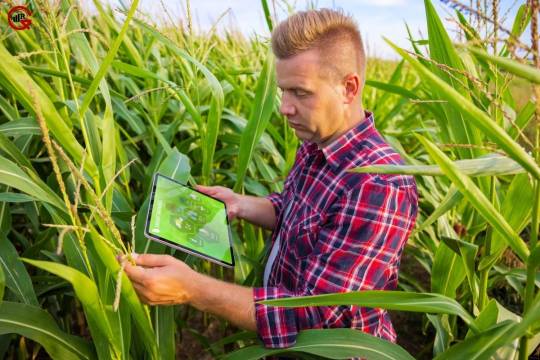
1. Precision Farming:
IoT sensors monitor soil moisture, temperature, nutrient levels, and other environmental parameters in real time, enabling farmers to implement precision irrigation and fertilization strategies. By delivering water and nutrients precisely where and when they are needed, precision farming minimizes waste and maximizes crop yields.
2. Crop Monitoring and Management:
IoT devices such as drones and satellite imagery provide farmers with detailed insights into crop health, growth patterns, and pest infestations. This information allows farmers to detect early signs of stress or disease, implement targeted pest control measures, and optimize harvesting schedules for maximum yield and quality.
3. Livestock Monitoring:
IoT sensors of smart farming attached to livestock animals monitor vital signs, behavior, and location in real-time, enabling farmers to detect signs of illness, monitor grazing patterns, and ensure animal welfare. By leveraging IoT technology, farmers can optimize feeding schedules, detect early signs of disease, and prevent livestock losses.
4. Supply Chain Management:
IoT devices track and monitor agricultural products throughout the supply chain, from farm to fork. By providing real-time visibility into product location, temperature, and condition, IoT technology enables farmers, distributors, and retailers to ensure product quality, reduce waste, and enhance traceability and transparency.
5. Environmental Monitoring:
IoT sensors monitor environmental conditions such as weather patterns, air quality, and soil erosion, providing valuable insights into the impact of farming practices on ecosystems and natural resources. By monitoring and mitigating environmental risks, farmers can minimize their ecological footprint and contribute to sustainable agriculture and conservation efforts.
Benefits of IoT in Smart Farming
The adoption of IoT technology in agriculture offers numerous benefits for farmers, consumers, and the environment. Some key benefits include:

1. Increased Efficiency and Productivity:
IoT-enabled precision farming practices optimize resource utilization, reduce input costs, and maximize crop yields, enhancing overall farm efficiency and profitability.
2. Improved Decision-Making:
Real-time data from IoT sensors enable farmers to make informed decisions based on accurate and up-to-date information, leading to better crop management, risk mitigation, and resource allocation.
3. Enhanced Sustainability:
IoT technology enables farmers to adopt sustainable farming practices that minimize environmental impact, conserve natural resources, and promote biodiversity, contributing to long-term environmental sustainability.
4. Enhanced Food Safety and Quality:
IoT devices ensure product traceability and transparency throughout the supply chain, enabling farmers, distributors, and consumers to track the origin, handling, and condition of agricultural products, thereby ensuring food safety and quality.
5. Resilience to Climate Change:
IoT sensors provide early warning systems for extreme weather events, droughts, and other climate-related risks, enabling farmers to adapt and respond proactively to changing environmental conditions, enhancing resilience, and reducing vulnerability to climate change impacts.
Challenges and Deliberations
Despite the many benefits of IoT in agriculture, several challenges and considerations must be addressed for widespread adoption and effectiveness. These include:
1. Cost and Affordability:
The initial investment and ongoing maintenance costs of IoT devices can be prohibitive for smallholder farmers or those operating on a limited budget. Efforts to reduce costs, increase affordability, and provide financial incentives or subsidies for IoT in smart farming adoption are needed to ensure equitable access to technology.
2. Data Privacy and Security:
IoT devices collect and transmit sensitive data about farm operations, crop yields, and supply chain activities, raising concerns about data privacy and security. Robust data encryption, secure communication protocols, and adherence to data protection regulations are essential to safeguarding farmers’ data and maintaining trust in IoT technology.
3. Interoperability and Compatibility:
IoT devices in smart farming from different manufacturers may use proprietary protocols or standards, leading to interoperability issues and compatibility challenges. Establishing common standards, open APIs (Application Programming Interfaces), and interoperable platforms is essential for seamless integration and data exchange between IoT devices and systems.
4. Digital Literacy and Technical Skills:
Many farmers lack the digital literacy and technical skills needed to effectively deploy and utilize IoT technology. Training programs, extension services, and capacity-building initiatives are needed to enhance farmers’ digital literacy and technical skills, enabling them to harness the full potential of IoT in agriculture.
Future Outlook
Looking ahead, the future of IoT in agriculture looks promising, with continued advancements in technology, research, and innovation driving the development and adoption of IoT solutions tailored to the needs of farmers and agribusinesses. From advanced sensors and drones to AI-powered analytics and blockchain-based traceability systems, IoT is poised to transform agriculture, making it more efficient, sustainable, and resilient in the face of emerging challenges and opportunities.
In conclusion, IoT technology in smart farming is revolutionizing agriculture, empowering farmers to make data-driven decisions, optimize resource utilization, and enhance productivity, sustainability, and resilience. By harnessing the power of IoT, agriculture has the potential to feed the world’s growing population while protecting the planet for future generations.
However, realizing this potential requires addressing challenges such as cost, privacy, interoperability, and digital literacy, and fostering collaboration and innovation across the agricultural ecosystem. With concerted efforts and investments, IoT holds the key to unlocking a smarter, more sustainable, and more resilient future for agriculture and food security worldwide.
1 note
·
View note
Text
Pricing in the Meat Industry
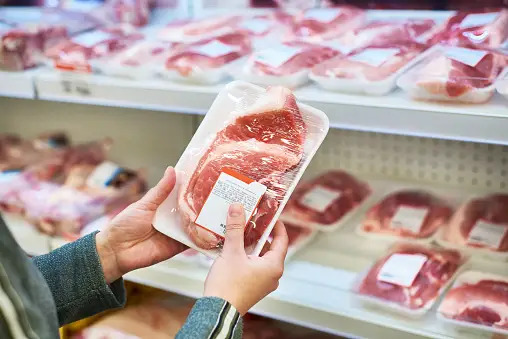
Written By: Gargi Sarma
Meat is more than simply food; it's a sophisticated commodity with a complex web of factors impacting its price. It's a mainstay in many diets around the world. Customers' final price is shaped by a wide range of factors from the farm gate to the shop shelf. To fully comprehend meat pricing, we must examine this complex system and navigate the interactions between supply and demand, market structures, laws, and even psychological strategies.
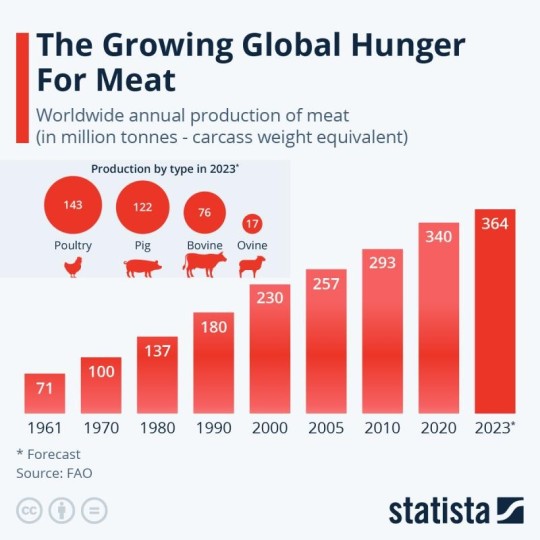
Figure 1: The Growing Global Hunger for Meat (Source: Statista)
For many years, there has been an increasing global need for beef. The Food and Agriculture Organization of the United Nations (FAO) reports that during the 1960s, the world's meat production expanded fivefold. The FAO estimates that 364 million tons of meat will be produced in 2023.
The Intertwined Dance of Supply and Demand:
The basic economic concept of supply and demand is at the core of the price of meat. Animal availability and pricing can be greatly impacted by a number of supply-side factors, including weather fluctuations, disease outbreaks, feed costs, and livestock breeding cycles. Farmers may be forced to grow livestock to market weight earlier if feed prices suddenly rise, for example. This could result in a glut of smaller animals and possibly lower prices. On the other hand, severe winters may restrict the amount of feed available, reducing growth, and resulting in a drop in supply and subsequently higher prices.
Demand is also very important. The intake of meat can be influenced by cultural customs, consumer preferences, income levels, and even health issues. Increased demand for premium cuts, for instance, might result from rising disposable incomes, while customers may choose leaner choices due to greater health consciousness, which would have an impact on costs across the board.
Market Structures: From Farm to Fork:
Meat travels through a complex network of interconnected parties from farm to fork, all of whom have a stake in the outcome.
Farmers: The initial expenses of growing livestock, such as feed, land, and veterinary care, are borne by farmers because they are the primary producers. The industry's power dynamics and erratic market conditions frequently put pressure on its profit margins.
Packers and processors: These massive companies handle the killing, butchering, and packaging of meat; they also add to processing expenses and have an impact on the cuts and portions that are offered to customers. Over time, their consolidation has led to worries about possible price manipulation and diminished bargaining leverage for farmers.
Distributors and retailers: The final price at the checkout counter is further increased by the markups, marketing expenditures, and transportation charges that wholesalers and supermarkets add. The ultimate consumer pricing is also influenced by the degree of competition among retailers and their ability to negotiate with processors.
Control and Outside Factors:
In addition to market dynamics, the pricing of meat is significantly influenced by government restrictions and external influences. Trade agreements, import quotas, and food safety regulations can affect the supply and demand inside the country, causing changes in prices. Disease outbreaks, such as avian influenza, for example, might lead to import restrictions, which lowers competition and may drive up domestic prices. Similar to this, environmental laws about pollution prevention or animal welfare may increase producer costs, which will ultimately be reflected in the end product price.
Psychological Pricing: Gently prodding customers in the meat section
Even the price tag, which may appear simple, is skillfully designed to affect how customers behave. Charm pricing, which ends prices in nines, such as $4.99, is one technique that lowers costs and creates a sense of value. Anchor pricing emphasizes savings and portrays the final price more enticingly by presenting a higher initial price followed by a discount. When costly cuts are placed strategically next to less expensive options, customers may be persuaded to choose the more expensive options by use of comparison.
Challenges:
The meat industry faces a complex web of challenges when it comes to pricing its products. Balancing profitability with consumer affordability while navigating a volatile market requires careful consideration of several factors:
Demand Fluctuations:
Seasonality: Consumer demand for meat varies significantly throughout the year, impacting prices. Holidays and barbeque season drive up demand, while quieter periods see prices dip. Predicting these ebbs and flows accurately is crucial for setting optimal prices.
Economic Trends: Fluctuations in the economy can significantly impact consumer spending habits. During recessions, consumers might opt for cheaper cuts or alternatives, forcing price adjustments.
Dietary Trends: Growing awareness of health and environmental concerns has led to a rise in vegetarianism and flexitarianism. This shift in consumer preferences necessitates diversification of offerings and potentially lower prices for traditional meat products.
Reliable Transportation:
Perishable nature: Meat is highly perishable, requiring consistent cold chain logistics for safe transportation. Maintaining this infrastructure adds to operational costs, which may be reflected in pricing.
Fuel and labor costs: Rising fuel prices and labor shortages in the transportation sector can significantly impact delivery costs, putting pressure on meat processors to adjust prices accordingly.
Global disruptions: Pandemics, geopolitical conflicts, and natural disasters can disrupt global supply chains, leading to transportation delays and increased costs that may require price adjustments.
Wastage:
Processing losses: During processing, trimming, and packaging, unavoidable meat loss occurs. Minimizing this wastage through efficient practices and technology helps control costs and allows for fair pricing.
Spoilage: Improper handling or storage can lead to spoilage, resulting in lost revenue and potentially impacting future pricing strategies to compensate for these losses.
Consumer waste: Consumers may discard parts of meat due to improper storage or preparation, leading to overall industry waste and potential pressure on producers to lower prices to compensate.
Production:
Feed costs: The cost of animal feed fluctuates based on grain prices and other factors, directly impacting production costs and requiring adjustments in pricing strategies.
Animal health and welfare: Ensuring animal health and welfare often involves additional costs for veterinary care, improved living conditions, and antibiotic-free practices. These efforts might be reflected in higher prices for premium meat products.
Labor shortages: The meat industry faces labor shortages, leading to increased labor costs and potentially requiring price adjustments to maintain profitability.
Additional Challenges:
Competition: Intense competition within the meat industry puts pressure on pricing, forcing producers to find ways to differentiate their products and justify higher prices.
Government regulations: Environmental and animal welfare regulations can add to production costs, which may be reflected in pricing strategies.
Consumer price sensitivity: Consumers are increasingly price-sensitive, demanding value for their money. Finding the right balance between affordability and profitability is crucial for success.
Data & Analytics: Taking the wheel of pricing:
Meat producers and retailers are depending more and more on advanced analytics to guide their pricing strategies in the data-driven world of today. To forecast demand and improve pricing models, they monitor rival pricing, consumer preferences, industry trends, and even meteorological patterns. Through the examination of past data and current sales figures, they can dynamically modify prices, providing specific discounts or modifying markups in response to shifts in demand.
Produce Freshness Detector: Integration with POS Data - Retailers in the meat business can precisely monitor the sales performance of fresh produce by connecting the data from the Produce Freshness Detector with point-of-sale (POS) information. By optimizing revenue and decreasing waste, this integration enables dynamic pricing adjustments based on real-time freshness indicators.Teys Australia: This major Australian meat processor uses the "Shelf Life Predictor" system, which combines sensors, machine learning, and cloud-based analytics to assess meat freshness and predict shelf life. Integrating this data with POS allows for informed dynamic pricing based on real-time product quality.
In-Store Display: Integration with Demographic Detection Camera - Retailers can customize promotional content based on the demographics of the customers present by merging data from demographic detection cameras with information from in-store displays. For example, personalized advertising might be displayed based on the preferences of a certain demographic, such as meat varieties, to maximize sales and decrease waste.InContext Solutions: Integrates in-store displays with shopper behavior data, which could include pre-existing demo data.
Expiration Date Tracker: Integration with Inventory Data - Inventory management systems that integrate data from expiration date trackers guarantee proactive handling of merchandise that is about to expire. This integration reduces waste by enabling prompt restocking, markdowns, or targeted promotions to move out merchandise before it goes bad.Fishbowl: This popular cloud-based inventory management system (IMS) offers built-in expiration date tracking, batch and lot control, and real-time stock visibility to minimize waste and optimize product movement.
Demographic Detection Camera: Integration with POS Data and Electronic Shelf Labels - Retailers may learn more about how different populations purchase by combining POS data, electronic shelf labeling, and demographic detection camera data. Strategic price decisions, such as providing discounts or promotions during peak hours for particular consumer groups, are made possible by this knowledge, which maximizes revenue.Criteo: Specializes in retargeting and dynamic product ads, potentially benefiting from real-time purchase data from POS systems.
Electronic Shelf Labels: Integration with GS1 Barcode Data and Inventory Data - Accurate product information and inventory levels can be obtained by integrating GS1 barcode data with electronic shelf labels. By ensuring that the price on the shelf corresponds with the real product data, this integration lowers pricing errors. Real-time information on inventory levels also reduces waste by preventing stockouts and overstocking.RapidPricer: RapidPricer integrates electronic shelf labels with barcode data and inventory management systems which ensures accurate pricing and helps manage stock levels to avoid overstocking and waste.
GS1 Barcode Data: Integration with POS Data and Weather Data - When paired with real-time weather information and point-of-sale data, GS1 barcode data enables shops to modify prices in response to outside variables. For example, shops can use targeted promotions or discounts on particular meat products to increase demand and minimize wastage during bad weather.GS1 Barcode: When a product with a GS1 barcode is scanned at checkout, POS systems can immediately identify the product and link its sales data to real-time weather information. This allows retailers to implement dynamic pricing strategies or targeted promotions based on weather patterns.
Integration with Weather Data: Reduction of CO2 Emission - Effective supply chain management is made possible by the integration of weather data with inventory and transportation systems. Businesses can minimize CO2 emissions and fuel usage by optimizing transportation routes based on weather conditions. Furthermore, precise weather forecasts support demand forecasting by avoiding overstocking and the waste that follows.Microsoft Azure Maps: Offers various geospatial services, including weather forecasting APIs, that can be integrated into supply chain management and logistics software.
Benefits:
Strategic Pricing Decisions: Retailers may optimize income by making well-informed pricing decisions based on customer behavior, product freshness, and real-time considerations, thanks to the integration of these devices and data sources.
Reducing Wastage: By making sure that products are sold before they expire, proactive freshness monitoring, accurate inventory management, and focused promotions help to reduce wastage.
Minimization of CO2 Emission: The supply chain's integration of meteorological data optimizes transportation routes and cuts down on pointless stock movements, hence minimizing CO2 emissions and promoting sustainable practices in the meat business.
Case Studies: Unveiling the Pricing Puzzles:
The Chicken Conundrum: In the US, broiler chicken production is dominated by vertically integrated companies that control all aspects of the production chain, from breeding to processing and retail. This gives them significant control over supply and pricing, leading to relatively stable, but possibly lower prices for consumers.
The Wagyu Wars: Premium cuts of Wagyu beef, renowned for their marbling and intense flavor, command significantly higher prices due to limited supply and stringent breeding practices. Producers in countries like Japan and Australia rely on careful market segmentation and targeted marketing to justify the premium pricing.
RapidPricer: RapidPricer helps automate pricing, promotions, and assortment for retailers. The company has capabilities in retail pricing, artificial intelligence, and deep learning to compute merchandising actions for real-time execution in a retail environment. RapidPricer solution focuses on a strategic subset of products within the meat category characterized by limited shelf life and seasonal stability. To measure the solution's effectiveness, RapiPricer establishes clear Key Performance Indicators (KPIs) which aim to achieve the following objectives for the meat industry:
Reduce food waste through optimized pricing.
Increase net margin by minimizing losses.
Boost revenue by maximizing product sell-through.
Moreover, RapidPricer can work on data analytics with the above-mentioned partner ecosystem.

Figure 2: RapidPricer’s Solution
Conclusion:
To sum up, in the meat industry, efficient pricing techniques are critical to striking a careful balance between optimizing profits, reducing waste, and advancing sustainability. Businesses can make strategic decisions that align with consumer preferences and market dynamics by utilizing cutting-edge technologies like produce freshness detectors, in-store displays, and demographic detection cameras. These technologies can be seamlessly integrated with data sources like inventory, GS1 barcodes, POS, and weather information. By minimizing CO2 emissions and significantly reducing food waste, the application of such comprehensive pricing strategies not only maximizes financial outcomes but also helps to reduce environmental effects. As the meat business develops, adopting creative pricing strategies guarantees not only financial success but also a dedication to satisfying consumers' shifting needs and promoting sustainable practices for a healthier future.
About RapidPricer
RapidPricer helps automate pricing and promotions for retailers. The company has capabilities in retail pricing, artificial intelligence and deep learning to compute merchandising actions for real-time execution in a retail environment.
Contact info:
Website: https://www.rapidpricer.com/
LinkedIn: https://www.linkedin.com/company/rapidpricer/
Email: [email protected]
#meatindustry hashtag#pricingstrategies hashtag#supplychainmanagement hashtag#sustainablebusiness hashtag#datadrivendecisions hashtag#retailtech hashtag#foodwastereduction hashtag#markettrends hashtag#consumerbehavior hashtag#environmentalsustainability hashtag#techinretail hashtag#innovativepricing hashtag#demographicanalysis hashtag#smartretail hashtag#foodtech hashtag#globalmeatdemand hashtag#economicimpact hashtag#dynamicpricing
0 notes
Text
Wood Waste Recycling
Discover premium biofuel, wood shavings, and environmentally friendly fuel options at Animal Supplies Company in Egypt. Explore natural cat litter and wood waste recycling.Wood Waste Recycling
About Company:-
Premium Biofuel and Animal Supplies Company was established in 2001. We manufacture biofuels for heating homes as well as bedding For all types of animals, including horse stables, poultry farms, different types of dairy cows, calves, cats, dogs and pets.
Our factory produces all kinds of sawdust & wood pellets made of 100% pine wood, and all our products high quality.
Our company works and cooperates with the biggest European companies livestock farms And sports clubs, , factories and distributors. Our fleet is available to deliver goods to all parts of Egypt, the Arab world and all parts of the world.
We are committed to developing our technologies and improving our products to the best quality, which will satisfy our valued customers.
Click Here For More Info:- https://premiumwoodshavings.com/
Location:- Egypt - Damietta - New Damietta city - Third province - block 15 - building 115/51
Social Media Profile Links:-https://www.facebook.com/premium.pets.store.eg
0 notes
Text
Pelletized Wood Products
Discover premium biofuel, wood shavings, and environmentally friendly fuel options at Animal Supplies Company in Egypt. Explore natural cat litter and wood waste recycling.Pelletized Wood Products
About Company:-
Premium Biofuel and Animal Supplies Company was established in 2001. We manufacture biofuels for heating homes as well as bedding For all types of animals, including horse stables, poultry farms, different types of dairy cows, calves, cats, dogs and pets.
Our factory produces all kinds of sawdust & wood pellets made of 100% pine wood, and all our products high quality.
Our company works and cooperates with the biggest European companies livestock farms And sports clubs, , factories and distributors. Our fleet is available to deliver goods to all parts of Egypt, the Arab world and all parts of the world.
We are committed to developing our technologies and improving our products to the best quality, which will satisfy our valued customers.
Click Here For More Info:- https://premiumwoodshavings.com/
Location:- Egypt - Damietta - New Damietta city - Third province - block 15 - building 115/51
Social Media Profile Links:-
0 notes
Text

Premium Biofuel and Animal Supplies Company was established in 2001. We manufacture biofuels for heating homes as well as bedding For all types of animals, including horse stables, poultry farms, different types of dairy cows, calves, cats, dogs and pets.Our factory produces all kinds of sawdust & wood pellets made of 100% pine wood, and all our products high quality. Our company works and cooperates with the biggest European companies livestock farms And sports clubs, , factories and distributors. Our fleet is available to deliver goods to all parts of Egypt, the Arab world and all parts of the world. We are committed to developing our technologies and improving our products to the best quality, which will satisfy our valued customers.
Premium For Biofuels
Visit here- https://premiumwoodshavings.com/
0 notes
Text
Nourishing the World: Bringing Together Farmers and Consumers through our Wide Array of Agricultural Offerings

E-commerce of agricultural products refers to the online trading and exchange of various agricultural goods and services through digital platforms. This emerging market has gained significant traction in recent years, driven by technological advancements, changing consumer preferences, and the need for more efficient and transparent supply chains in the agricultural sector.
Market Definition:
The e-commerce of agricultural products encompasses a wide range of activities, including the online sale and purchase of fresh produce, grains, livestock, farm equipment, seeds, fertilizers, and agri-inputs. It also includes services such as farm management software, marketplaces for agricultural products, and online agricultural advisory services. This market leverages digital platforms to connect farmers, producers, distributors, and consumers, facilitating seamless transactions and enhancing the accessibility of agricultural products.
Market Overview:
The e-commerce of agricultural products market has witnessed substantial growth in recent years. This growth can be attributed to several factors, including the increasing adoption of digital technology in agriculture, the need for a more efficient and transparent agricultural supply chain, and the rising demand for fresh and organic produce. E-commerce platforms have bridged the gap between rural and urban markets, allowing farmers to reach a broader customer base and consumers to access a wider range of agricultural products.
Market Growth:
The e-commerce of agricultural products market growth prospects are promising. The market is expected to continue expanding as more farmers and agricultural businesses recognize the benefits of online platforms. These benefits include increased market reach, reduced dependence on traditional intermediaries, and access to valuable data and analytics that can enhance decision-making and productivity. Furthermore, the COVID-19 pandemic accelerated the digital transformation of agriculture, with more stakeholders embracing e-commerce solutions to adapt to changing market dynamics.
Market Industry:
The e-commerce of agricultural products has given rise to a diverse ecosystem of companies and startups specializing in various segments of the agricultural value chain. This industry includes e-commerce platforms, logistics and transportation providers, online payment solutions, agri-tech startups, and digital marketing agencies catering to the specific needs of the agricultural sector. These players work collaboratively to create a seamless online marketplace that benefits both producers and consumers.
Market Trends:
Several notable trends are shaping the e-commerce of agricultural products market. These trends include the integration of advanced technologies such as blockchain and Internet of Things (IoT) for supply chain transparency and traceability, the growth of mobile-based agricultural apps for smallholder farmers, the rise of agri-marketplaces that offer a wide range of products and services, and the increasing emphasis on sustainability and environmentally friendly practices in agriculture.
In conclusion, the e-commerce of agricultural products market is experiencing rapid growth and transformation. As technology continues to evolve and consumer preferences change, this market is poised to play a pivotal role in modernizing the agricultural sector, improving access to agricultural products, and enhancing the overall efficiency and sustainability of food production and distribution.
#E-commerce of Agricultural Products Market#E-commerce of Agricultural Products Market Growth#E-commerce of Agricultural Products Market Trends
0 notes